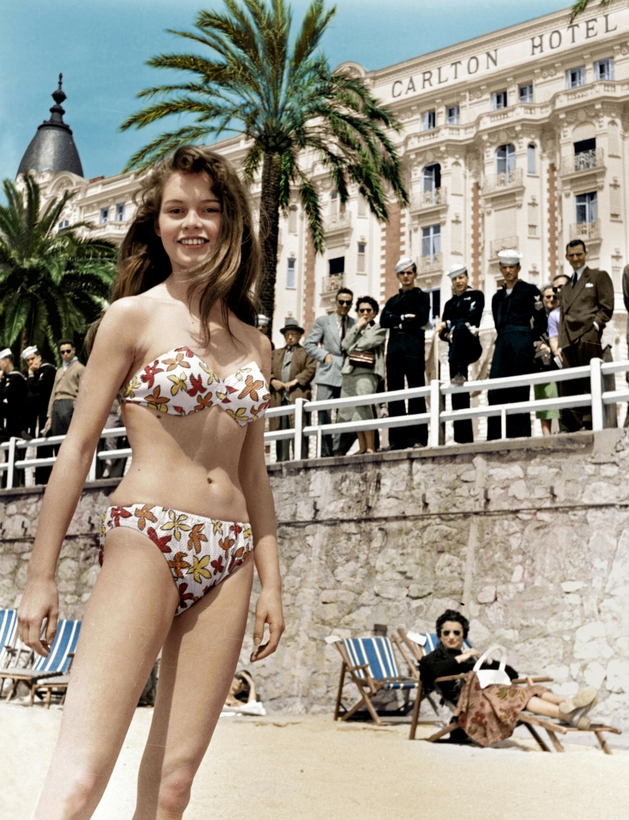In the summer of 1946, the French designer Louis Réard unveiled a super-skimpy two-piece swimsuit in Paris. The garment reflected the freewheeling spirit of postwar Europe, and took its name—“bikini”—from the Bikini atoll, an island in the South Pacific used for nuclear testing. There had been two-piece swimsuits before 1946, but none had ever dared expose the navel. Exploding like a bomb, Réard’s two-piece sent waves of shock and delight around the world.
The itsy-bitsy phenomenon now has its own museum. Just opened, and located in the German spa town of Bad Rappenau—about an hour and a half’s drive from Frankfurt—the Bikini Art Museum devotes its galleries to bathing history and culture, while keeping Réard’s creation front and center. More than 400 bathing suits are on view, dating from 1870 to the present day and including bikinis once worn by Marilyn Monroe, Scarlett Johansson, Eva Green, Esther Williams, and Joan Collins. Ghislaine Rayer, the museum’s curator, sees the exhibition as a saunter through the history of swimwear: “It is not only a collection of bikinis, but of bathing suits that tell the history and evolution of the swimsuits.”

The museum displays its pieces chronologically, beginning with mid-19th-century swimwear (which traditionally included a bathing cap and stockings), continuing through the 1930s (halter tops with shorts), and eventually reaching the high-waisted, pinup bikinis with polka dots introduced in the 1950s. Réard’s 12 original bikini designs, circa 1946, are all present, and the exhibition’s designer swimwear includes vintage pieces by Coco Chanel, Christian Dior, and Emilio Pucci.
It took Rayer more than 20 years to build her swimwear collection, and much of it was scoured from countless trips to American flea markets, thrift shops, and antique dealers. “America has a real beach culture,” she says. “The 1950s was the golden age of the seaside.” —Nadja Sayej


 Discover
Discover